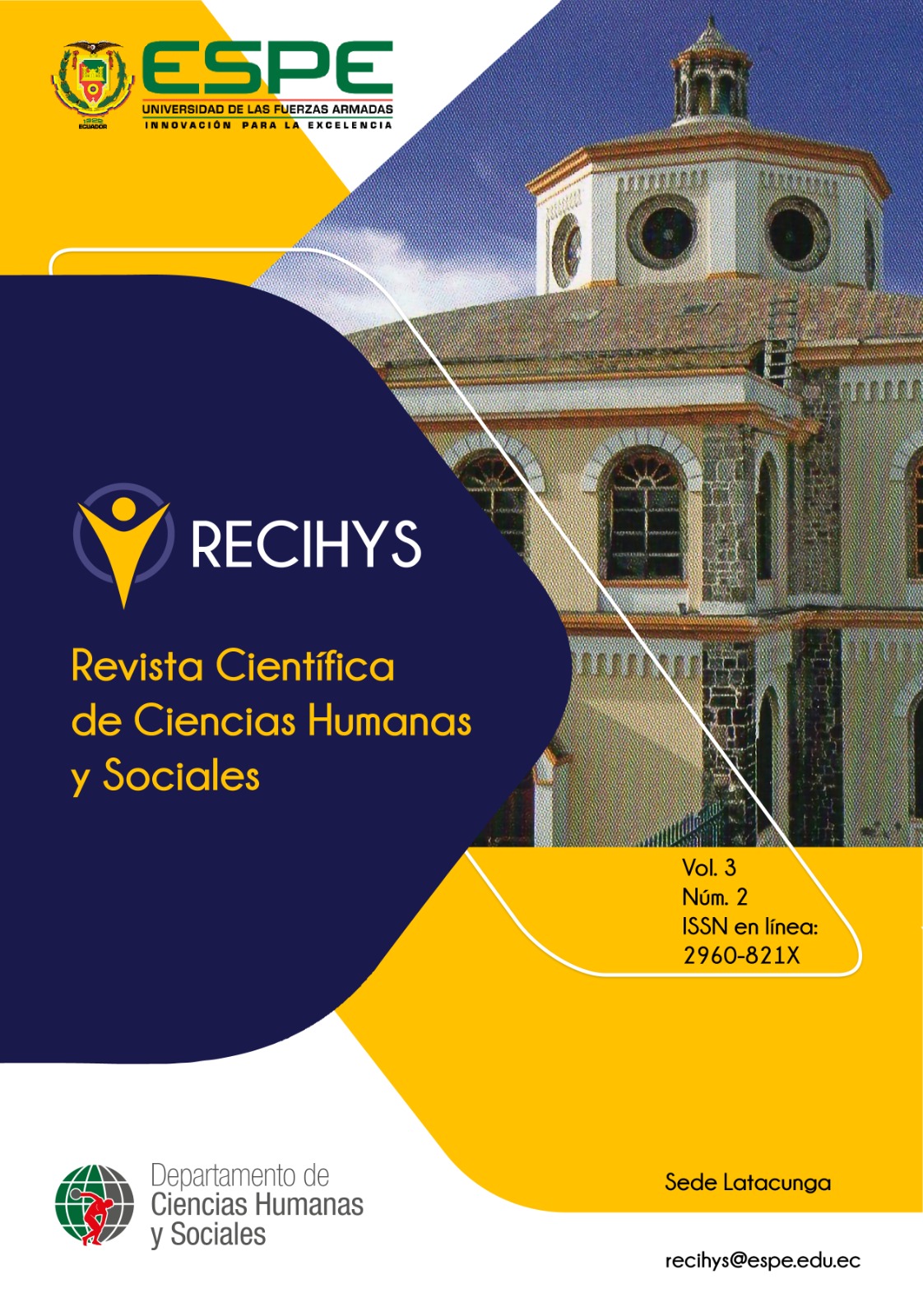Rhythmic activities in the development of temporal-spatial notions in children from 4 to 5 years old.
Main Article Content
Abstract
The research study deals with the research categories of rhythmic activities and development of temporal-spatial notions; as part of the learning process, from the daily experiences of children to become aware of time, their position in space, direction, location and orientation with the elements that surround them towards the construction of knowledge; The purpose of which was to determine the contribution of rhythmic activities in the development of temporal-spatial notions in children from 4 to 5 years old. The methodological process was developed through a qualitative approach, interpretative paradigm, descriptive scope; the phenomenological method was considered; Techniques and instruments were implemented for the collection of information such as the directed semi-structured interview, an observation sheet applied to students, the population was made up of 32 students including 1 teacher from the area. For data collection, we worked with the Atlas.Ti 25 program, facilitating the analysis of each instrument used. It is concluded that rhythmic activities contribute favorably to the development of temporal-spatial notions in children, by integrating rhythm and relating it to the temporal organization of sequences and duration, in addition to including alternatives from the theoretical basis of Dalcroze and the BAPNE method.
Downloads
Article Details
Authors who publish in this journal agree to the following terms: Authors retain the copyright and guarantee the journal the right to be the first publication of the work, as well as, licensed under a Creative Commons Attribution License that allows others share the work with an acknowledgment of the authorship of the work and the initial publication in this journal. Authors may separately establish additional agreements for the non-exclusive distribution of the version of the work published in the journal (for example, placing it in an institutional repository or publishing it in a book), with acknowledgment of its initial publication in this journal. Authors are allowed and encouraged to disseminate their work electronically (for example, in institutional repositories or on their own website) before and during the submission process, as it may lead to productive exchanges as well as further citation earliest and oldest of published works.
How to Cite
References
Amagua, E. (2020). Esquema corporal en el desarrollo de las nociones espaciales en los niños del subnivel II [Tesis de grado, Universidad Tecnológica Indoamericana]. https://repositorio.uti.edu.ec/bitstream/123456789/1852/1/AMAGUA IM BA ELBA MARITZA.pdf
Bachmann, M. (1998). La rítmica Jaques-Dalcroze. Una educación por la música y para la música. Pirámide.
Cabrera, A., & Romero, F. (2021). Neuromotricidad, psicomotricidad y motricidad. Nuevas aproximaciones metodológicas. Retos, 42, 924–938. https://doi.org/10.47197/retos.v42i0.89992
Chicaiza, A. (2021). Actividades rítmicas y el desarrollo de la expresión corporal en el Nivel Inicial [Tesis de grado, Universidad Técnica de Ambato]. https://repositorio.uta.edu.ec/bitstream/123456789/35038/1/TRABAJO FINAL_CHICAIZA ANA-signed-signed %281%29-signed %281%29.pdf
Fajardo, K., & Freire, C. (2022). Actividades rítmicas y su incidencia en el desarrollo motor grueso en los niños y niñas de 4 a 5 años [Tesis de grado, Universidad Central del Ecuador]. http://www.dspace.uce.edu.ec/handle/25000/30824
Guzmán, J. (2020). La educación rítmica de la percusión afrolatinoamericana en la carrera Maestro en Música en Colombia. Revista Universidad y Sociedad, 12(3), 167–175. http://scielo.sld.cu/scielo.php?script=sci_arttext&pid=S2218-36202020000300167&lng=es&tlng=es
Hernández, S., & Coello, M. (2025). Impacto de la estimulación temprana en el desarrollo motor en niños de educación inicial. Polo Del Conocimiento, 10(3), 938–953. https://polodelconocimiento.com/ojs/index.php/es/article/view/9098/pdf
Olea, J. (2020). El ritmo en la vida. Temas de Nuestra América, 36(67), 27–35. https://doi.org/10.15359/tdna.36-67.3
Orrala, M., & Figueroa, D. (2023). El juego en el desarrollo de las nociones espacio-tiempo en niños de 4 a 5 años [Tesis de grado, Universidad Estatal Península de Santa Elena]. https://repositorio.upse.edu.ec/handle/46000/10368
Peralta, I. (2022). Estrategias de aprendizaje para incentivar las actividades rítmicas musicales en la unidad educativa “Issac Acosta” [Tesis de grado, Universidad Técnica del Norte]. https://repositorio.utn.edu.ec/handle/123456789/12270
UNICEF. (2019). Identificar las desigualdades para actuar: el desarrollo de la primera infancia en américa latina y el caribe. https://www.unicef.org/lac/media/9821/file/IdentificarLasDesigualdadesParaActuar_Resumen.pdf

